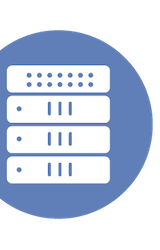Tech Field Day Coverage
Our delegate panel includes independent writers and thought leaders, and we collect their coverage of the event, Tech Field Day presentations, and sponsoring companies here.
The Datera Company overview
Arjan Timmerman wrote an overview of some of the company principals he learned while visiting Datera at Storage Field Day earlier this month. Their presentation started with an overview from CEO Marc Fleischmann. He explained that Datera wants to give companies the ability to create their own architecture as a service, enabling them to develop true hybrid cloud solutions. Arjan found the presentation really engaging and was pleased to hear more from Datera.
Read More:
Excelero NVMesh 1.1
Andrea Mauro might not have been at Storage Field Day earlier in March, but he wrote up his thoughts on Excelero’s launch presentation at the event. He’s intrigued by their NVMesh 1.1 product, which is a Software-Defined Block Storage solution, which offers low latency, scale-out performance on NVMe, and virtually 0% strain on the target CPU.
Read More:
Intel Storage Futures From #SFD12
Chan Ekanayake shares his thoughts from Intel’s presentation at Storage Field Day earlier in March. He focuses in on Intel’s Storage Performance Development Kit, and how SPDK will impact enterprise storage. It’s an open sources replacement for a lot of the storage functions of the Linux kernel, which allows for much lower latency, and nearly linear scaling of NVMe drive performance.
Read More:
Intel Storage Futures From #SFD12
Networking Field Day 15 – A new delegate emerges
Networking Field Day returns to Silicon Valley in April, and we’re thrilled to have Tony Mattke returning! Check out his announcement post to see why he’s excited to hear from all of the announced companies. Make sure to tune into the live stream during the event to see and hear more from Tony.
Read More:
Networking Field Day 15 - A new delegate emerges
NetApp’s Dave Hitz on the Cloud
Rich Stroffolino wrote up his thoughts on NetApp founder Dave Hitz’s talk about how the could has impacted enterprise IT in general, and how NetApp has responded. It was a fairly honest appraisal, with Dave admitting the company’s position two years ago was not completely competitive within their market. Overall, he found the cloud is not a zero-sum game, and that even on-prem solution could stand to a little “cloudification”.
Read More:
NetApp's Dave Hitz on the Cloud
Can NetApp do it a bit better?
At Storage Field Day earlier this month, the delegates saw a presentation at NetApp. Chin-Fah Heoh wrote up his thoughts. For him, the highlight was hearing from company founder Dave Hitz, who spoke both during the presentation, and at a follow up lunch. He also liked what he saw from CloudSync, which he thought provided an interesting service for going between on-premise and AWS cloud. Make sure to check out the entire piece for Chin-Fah’s complete thoughts on the presentation.
Read More:
Can NetApp do it a bit better?
NetApp Aren’t Just a Pretty FAS
Aside from some prime seating for the presentation, Dan Frith really enjoyed what he saw from NetApp’s Storage Field Day presentation last week. He was particularly impressed by their Cloud Control for Office 365, which is targeted for people who’ve done a migration over to Microsoft’s SaaS platform, but haven’t done anything to protect or retain that info. He’s also looking forward to digging into their Data Fabric solution, which he got an overview of during the event.
Read More:
NetApp Aren’t Just a Pretty FAS
In Search of the Perfect Data Management Machine
Glenn Dekhayser has a write up from his first Storage Field Day event. He got to hear from Intel, specifically about their Storage Performance Development Kit. Intel developed this to give hyperscale deployments more consistent performance for storage latency, which in SSDs often experiences frustrating tail latency. SPDK works by isolating an entire CPU core solely to storage IO. This allows for much lower latency, and gives you almost linear scalability with NVMe drives. Glenn is impressed with the impacts this could have at scale.
Read More:
In Search of the Perfect Data Management Machine
Hardware vs. software innovation – round 4
Ray Lucchesi considers Dell EMC’s decision to kill their DSSD NVMe storage device, and frames it in the continuing debate over hardware vs software innovation. Ray thinks it’s further evidence that we are in a software innovation cycle. As further evidence, recent releases by both Excelero and E8 Storage. Both are using commodity hardware to achieve high level performance, over 4 million IO/sec with ~120 to ~230µsec response times. It’s an interesting discussion, and Ray gives both sides their due.
Read More:
Hardware vs. software innovation – round 4
Excelero – The Latest Software Defined Storage Startup
Chan Ekanayake wrote up a highly detailed piece about what he saw from Excelero, who came out of stealth at Storage Field Day last week. He starts out by outlining the state of non-flash storage in the enterprise, which he sees as both consolidating with fewer players and embracing NVMe as the focus for innovation in the near future. This leads into his dicussion of Excelero, who is coming out of the gate with a true scale-out SAN solution. Chan outlines how they are able to get a ton of IOPs our of relatively modest hardware, all while keeping 0% load on the target CPU. Chan was definitely impressed, stating Excelero is “probably one of the best if not the best solution of its kind available in the market right now”. For use cases and technical details of how it all works, make sure to check out the rest of Chan’s piece.
Read More:
Excelero – The Latest Software Defined Storage Startup
Nimble Storage Gets Cloudy
Nimble Storage presented at Storage Field Day last week and talked about their block storage as a service called Nimble Cloud Volumes. Dan Frith wrote up his thoughts. Nimble Storage presented this as a compelling alternative to other block storage options, offering 6-9s of availability, and using a variety of public cloud partners for compute to avoid vendor lock-in. Dan likes what he saw, but wonders if this will be appealing to their existing customer base, or if this will be used to draw in new business.
Read More:
Programmable ASICs in Cisco Switches
Jasper Bongertz attended his first Tech Field Day presentation while he was at Cisco Live Europe. At the presentation, he learned about what Cisco is doing with programmable ASICs, including their “Unified Access Data Plane”, which allows for encapsulation or decapsulation of packets dynamically without losing performance. Jasper also liked seeing support for Netflow directly in hardware. He thinks while it’s an important network management tool, its also vital for security considerations. Overall, he thinks Cisco has an interesting approach to making ASICs a little more flexible.
Read More:
Programmable ASICs in Cisco Switches
Excelero are doing what? For how much?
Dan Frith got a look at Excelero’s NVMesh at Storage Field Day last week. NVMesh is a virtual SAN specifically designed for the particular capabilities of NMVe drives. Dan was impressed by the speeds attainable by the solution, which scale almost linearly as additional drives are added. More impressively, this is done with no load on the target CPU, with data being interacted directly with drives via RDDA. He isn’t quite as sure if it’s ready for mass adoption yet, Excelero isn’t ready to wrap in a bunch of data services in version 1.1. But if speed is your primary concern, Dan thinks Excelero has a compelling offering.
Read More:
Excelero are doing what? For how much?
Storage Field Day 12 Day 1 Recap and Day 2 Preview
Adam Bergh wrote up his thoughts after the first day of Storage Field Day, held last week in Silicon Valley. First up was Ryussi with their MoSMB solution. Adam found it an interesting SMB3 stack, ideally suited for scalable environments due to it’s lightweight and performance considerations. Starwind then presented, and Adam enjoyed hearing about their Cloud Gateway hardware, basically a hard drive without the drive to make cloud storage more addressable to your server. Elastifile presented about their distributed file system for block storage on Linux, using a very interesting consistency algorithm to keep performance from suffering. Finally, to finish the day, Excelero presented, launching their NVMesh solution. Adam was impressed when he saw 2.4 million IOPs at 0.2ms latency using relatively inexpensive hardware.
Read More:
Storage Field Day 12 Day 1 Recap and Day 2 Preview
Ryussi – Or Why Another SMB Stack Is Handy
First time Storage Field Day company Ryussi presented at last week’s event, showing off MoSMB, their SMB3 stack. Dan Frith wrote up his thoughts on the solution. Dan thinks it could be an interesting solution for companies not comfortable with the terms of open source alternatives, like Samba.
Read More:
Ryussi – Or Why Another SMB Stack Is Handy
Storage Field Day 12 – (Fairly) Full Disclosure
Dan Frith gives his disclosure of how he traveled, ate, and any swag received at the presentations from last week’s Storage Field Day.
Read More:
Storage Field Day 12 – (Fairly) Full Disclosure
SD-WAN Series Part 4: Viptela
In another installment of her excellent video series on SD-WAN, Eyvonne Sharp posted another video, this time looking a Viptela. She’s used this in a production environment, so the video goes into some interesting detail. She also breaks down the difference between SD-WAN with a WAN optimization background and those with a routing background, like Viptela.
Read More:
4.5M IO/sec@227µsec 4KB Read on 100GBE with 24 NVMe cards
Excelero Storage launched at Storage Field Day last week. Ray Lucchesi was in the audience, and got to see some interesting performance numbers from their NVMesh, their software defined block storage for Linux. Ray is definitely enthusiastic about what he saw, with good reason. Excelero showed off getting 4.5 million 4K random reads and 2.5 million 4K random writes on $13,000 worth of hardware, all with 0% target CPU usage. Check out the rest of Ray’s piece for the details.
Read More:
4.5M IO/sec@227µsec 4KB Read on 100GBE with 24 NVMe cards
Storage Field Day 12!
Adam Bergh created a rundown of all the presentations in advance of Storage Field Day. He highlighted not just the companies, but also the other delegates invited to the event. Adam was clearly excited, and it was a pleasure having him with us in Silicon Valley. Make sure to check out the full video coverage for each presenter if you missed any of the live stream during the event!
Read More:
The Engineering of Elastifile
Chin-Fah Heoh was at Storage Field Day last week. He’s written up his thoughts on what Elastifile presented, and came away “impressed to the max”. He thinks the company has put some in-depth computer science research behind their product, a truly distributed file system for object storage. The key to this is their internally designed consistency algorithm, Bizur. Check out the rest of the piece for a more in-depth look and the implications of their solution.
Read More:







